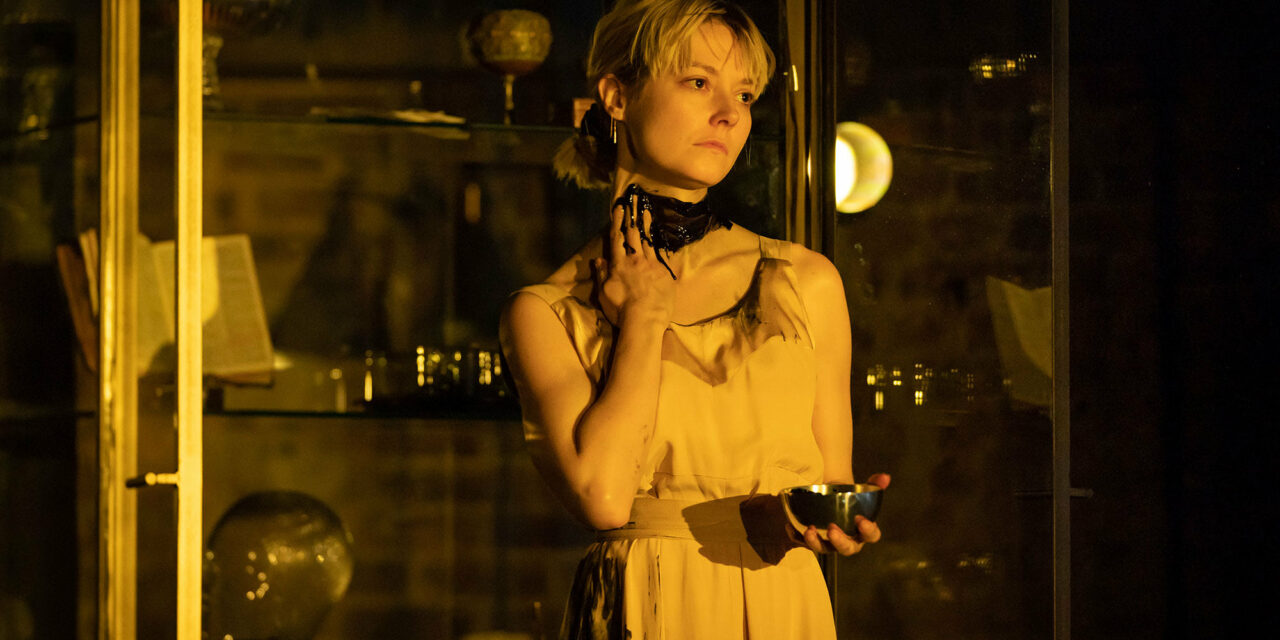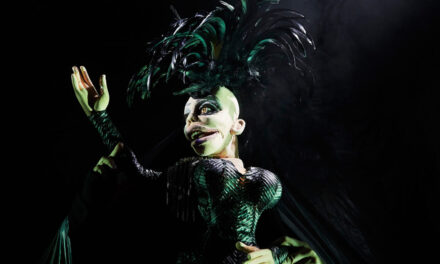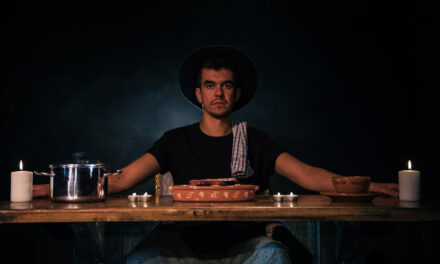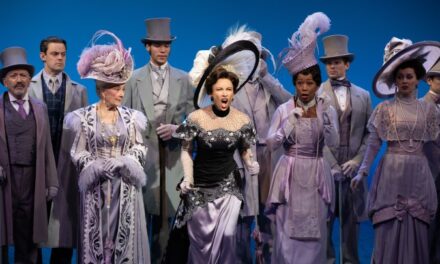This Duchess of Malfi is a cool one. It is so cool that it has lost its gripping temper and, with it, some of its fire. A surprising drop in temperature, because director Rebecca Frecknall had earlier set the Almeida Theatre ablaze with her revelatory production of Tennessee Williams’ Summer and Smoke and then rendered Chekhov’s Three Sisters with kindred intensity. Now she turns her gaze upon John Webster’s Jacobean tragedy, and the result is an emotionally detached, at times even frosted, journey through one woman’s blood-soaked marriage.
There is no denying that The Duchess of Malfi is a stylish production. Chloe Lamford centers her set on a moving, rectangular, glass-fronted box with tiled walls. The space in front of it has a darkly reflective surface and is bracketed on either side by glass cabinets that store all the props. Frecknall’s assured actors spend most of their time inside the upstage container, their voices amplified through microphones. They bang on the walls, smear them with black paint, throw themselves around. It all looks aesthetically lush, but is that enough?
Unfortunately not. The production’s flow is markedly viscous: the scenes do not so much progress as trudge along. Performances vacillate, often erratically, between the understated and the exaggerated. The dialogue feels unmoored, and the blocking—especially when it comes to the ever-shifting use of the container—raises more questions than it answers. While the play’s wickedly twisting story offers the ingredients of a visceral experience, Frecknall tends to combine them in theatrically inert ways. She captures the play’s doom-driven, nearly demonic aura primarily during the transitions, which feature projected titles and amp up the edge of George Dennis’ exhilarating sound design and the picturesque modulations of Jack Knowles’ lighting.
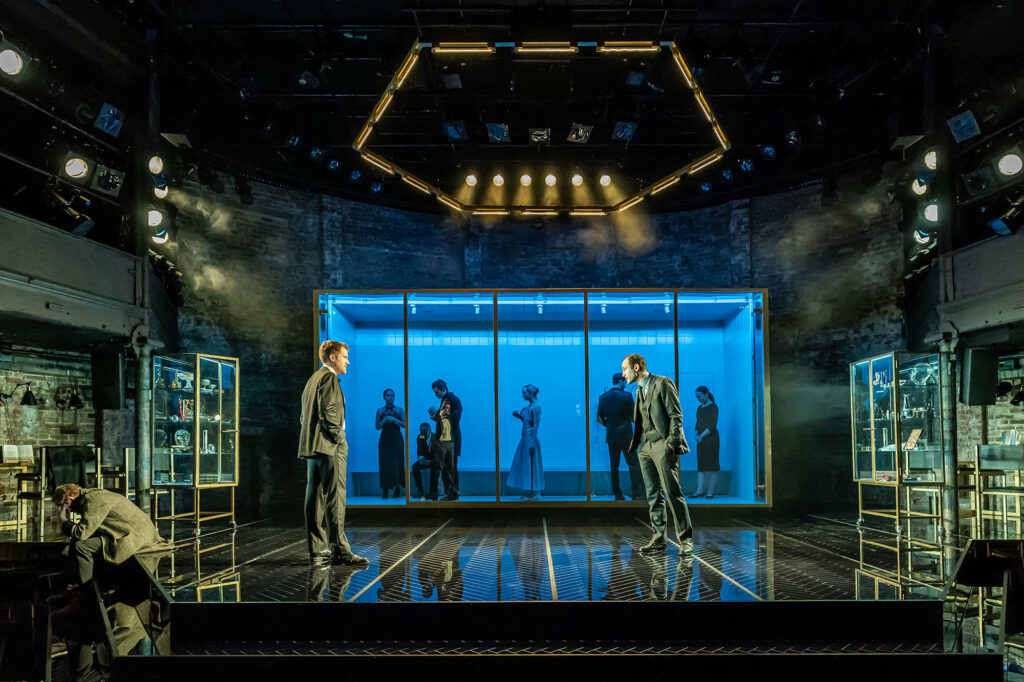
The cast of The Duchess of Malfi at the Almeida Theatre. Photo: Marc Brenner
The cast is partially complicit in creating this hazy, frigid effect. As the Duchess, Lydia Wilson does a fine job of grounding the central character in defensive rationality, but her portrayal becomes increasingly uneven. Of course, some of this has to do with the Duchess’ own unraveling, though there still appears to be some shakiness on Wilson’s part. Jack Riddiford and Michael Marcus have nicely contrasting takes on the Duchess’ brothers Ferdinand and the Cardinal, with Riddiford going for the feverishly unhinged. Despite his evil deeds, Leo Bill’s Bosola becomes a most welcome presence in this production: Bill imbues this devious character with a sympathetic and strangely naïve wit. And for the strongest performance, one would have to turn to Khalid Abdalla, whose cautiously ardent Antonio has a way of calibrating all his scenes with great control.
There are a handful of tableaus that collect and arrange these actors in lyrically charged poses. Indeed, Frecknall’s staging works better when its stylistic gestures are bold and consistent. She transforms, for instance, the final-act bloodbath into a pool of black tar: the murdered characters visibly streak themselves with a black, syrupy liquid and keep walking around the stage, haunting the living. Hence, the Duchess’ obstinate presence after her brutal death signifies a sort of ghostly resilience, a refusal to let go. In this feminist quasi-uprising, she is soon joined by the play’s other female characters, who accentuate her choreographic gait with their own. This alliance between death and gestural flourish gets even thicker near the end, at which point Frecknall’s abstraction reaches a mesmerizing, albeit free-floating, climax.
Style trumps substance in The Duchess of Malfi. It resembles, in other words, a charismatic and elegantly dressed stranger who turns out to be dull and a bit incoherent in conversation. Perhaps the only truly hard-hitting moment is the very last one, when Frecknall finally urges us to reconsider the play from a poignantly novel perspective: it is a memorable conclusion but cannot make up for the rest of this derivative, stilted work.
This post was written by the author in their personal capacity.The opinions expressed in this article are the author’s own and do not reflect the view of The Theatre Times, their staff or collaborators.
This post was written by Mert Dilek.
The views expressed here belong to the author and do not necessarily reflect our views and opinions.

